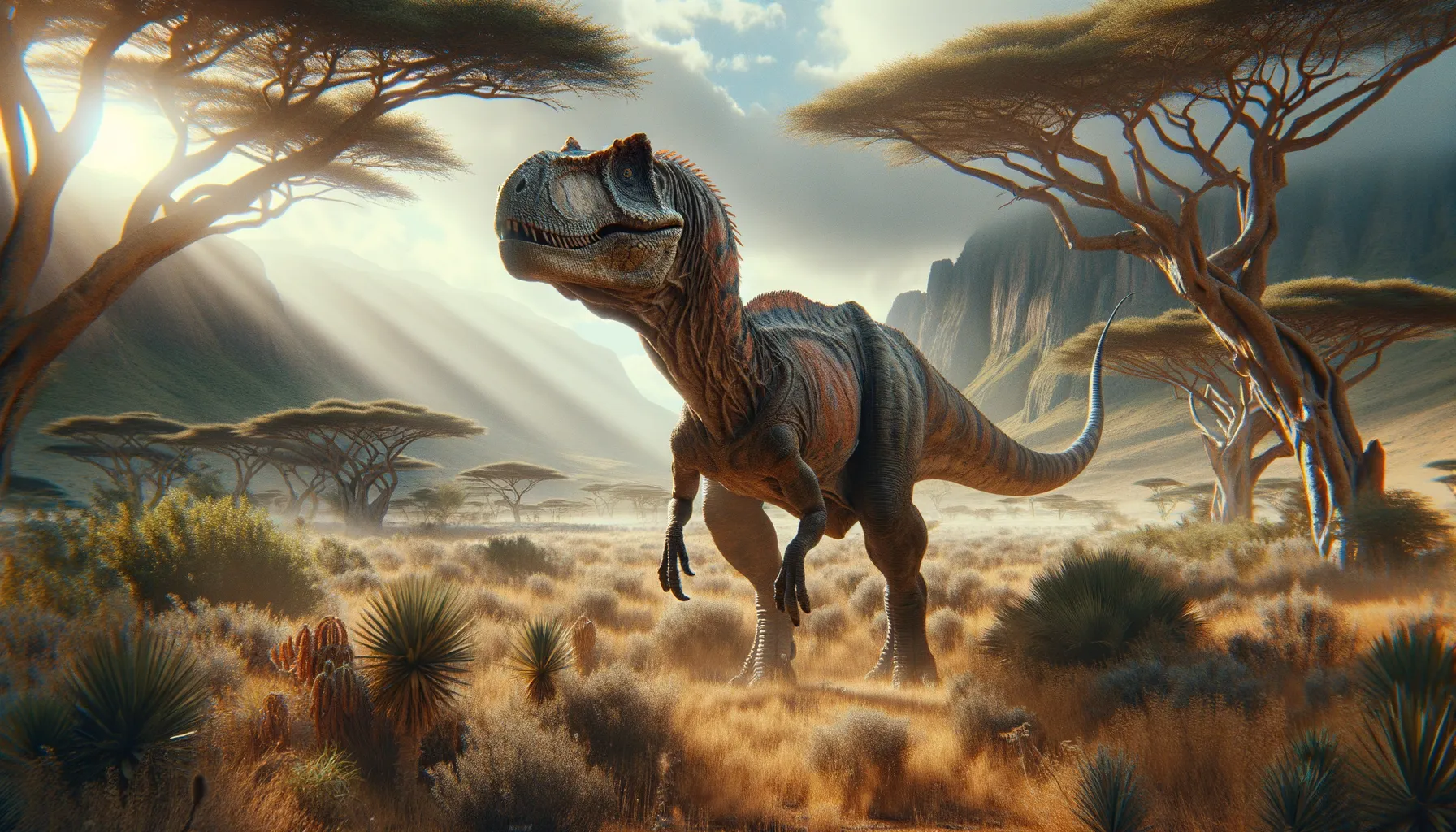
Ostafrikasaurus
A glimpse into Jurassic Africa's past.
Period
Jurassic
Length
Estimated to be around 8 meters long.
Height
Around 3 meters tall.
Weight
Approximately 500 kg.
Ostafrikasaurus was a theropod dinosaur that roamed the earth during the Late Jurassic period. Its existence is primarily understood from fossil fragments found in Tanzania. Though much is still unknown about this dinosaur, it is believed to share characteristics with other theropods of the time, possibly being a carnivorous species. Its fossils have sparked curiosity about the diversity of theropods in Africa during the Jurassic.
Diet
Ostafrikasaurus is thought to have been a carnivore. It likely preyed on smaller animals and possibly scavenged when necessary.
Hunting
It may have used stealth to approach its prey undetected. Once in proximity, it would have relied on quick lunges to catch its meals.
Environmental challenges
Ostafrikasaurus faced various environmental challenges, including fluctuating climates that could have affected its food supply. The Late Jurassic period saw changes in vegetation that would have impacted herbivorous prey. Competition with other predators was another challenge, requiring strategic adaptations to secure food. Additionally, tectonic activity in its region might have led to habitat disruptions.
Speed
Estimated to be fairly slow.
Lifespan
Lived for around 20-30 years.
First discovery
Discovered in Tanzania in the early 20th century.
Fun Facts
- Ostafrikasaurus is one of the earliest known spinosaurid dinosaurs, a group famous for their crocodile-like snouts.
- This dinosaur lived during the Late Jurassic period, around 150 million years ago, a time when dinosaurs like Allosaurus roamed the Earth.
- Ostafrikasaurus is known only from its fossilized teeth, which have a distinct, slightly curved shape with fine serrations.
- The name 'Ostafrikasaurus' means 'East African lizard,' as its fossils were discovered in what is now Tanzania.
- Owing to its limited remains, much about Ostafrikasaurus's size and appearance remains a mystery, sparking curiosity and debate among paleontologists.
- Spinosaurids like Ostafrikasaurus are thought to have been semi-aquatic, hunting for fish as well as other smaller dinosaurs.
- This dinosaur adds a puzzle piece to our understanding of spinosaurid evolution and their spread across ancient landscapes.
Growth and Development
The growth patterns of Ostafrikasaurus are largely speculative due to limited fossil evidence. It likely experienced rapid growth during its juvenile years, similar to other theropods. Maturity would have been reached within a relatively short span given its size. Lifespan and growth could have been influenced by food availability and environmental conditions.
Habitat
Ostafrikasaurus inhabited a landscape rich in lush vegetation and waterways. Its environment would have been a mix of forests and open areas, suitable for both hiding and hunting. The presence of rivers or lakes would have provided essential water sources. It coexisted with a variety of other dinosaurs, both herbivores and predators.
Interaction with other species
Ostafrikasaurus likely had dynamic interactions with other species in its ecosystem. It may have competed with other carnivores for food resources. Opportunistic scavenging on carrion left by larger predators could have been a survival strategy. Its presence may have influenced the behavior and distribution of herbivorous dinosaurs it preyed upon.
Natural lifespan
Ostafrikasaurus might have lived naturally for two to three decades.
Reproduction
Ostafrikasaurus, like other theropods, would have laid eggs. Nesting behavior might have involved creating simple ground nests. Parental care may have been minimal, with young potentially relying on camouflage for protection. Hatchlings likely had to become independent quickly to evade predators.
Social behaviour
The social behavior of Ostafrikasaurus is not well-documented. It may have been a solitary hunter, minimizing competition for food. However, some theropods are known to occasionally form loose groups. Any social interactions would have primarily revolved around mating and territorial disputes.
Fossil locations
Fossils of Ostafrikasaurus were primarily found in Tanzania. The discovery site has yielded a limited number of theropod fossils. The region is significant for understanding the diversity of the dinosaur fauna. Further excavations may reveal more about its ecological role and existence.
